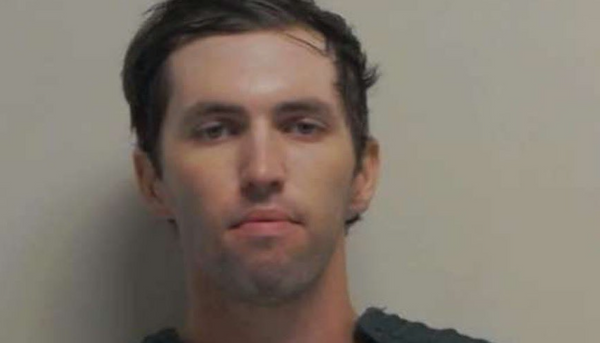
The tiny town of Brooms Head in northern New South Wales is not much more than a headland, a row of Norfolk Island pines and a sprawling caravan park separating the main road from the beach. It’s the kind of place with one shop, where the bestsellers are bait, mixed lollies and icy poles.
On a day trip there from nearby Angourie, our family lay sprawled on the beach, eating Cornettos in the sun, when four men walked past wearing packs – big, proper ones, adorned with damp swimmers. I gave chase.
“Excuse me,” I asked one. “Where are you going?”
“To Red Rock,” he replied, pointing at a headland just visible on the southern horizon. This was their second day on the four-day, 65km Yuraygir coastal walk, staying in campsites along the way.
It was 2020 and an idea was born. One day my kids (then 5, 8 and 11) would surely, finally, be big enough for proper adventures. And when they were, this would be the place to start.
Which is how my twin sister Laura, our five kids – aged 9 to 15 – and I came to be setting off into a raging headwind from Angourie Point in July 2024. Massive waves were rolling into the famous surf break but we turned south, leaving the wetsuit crowd behind.
It was the winter school holidays, but over the next four days we saw only four other walkers.
We soon settled into a steady rhythm of talking and walking over varied terrain. There were kilometres along wide, deserted beaches made moody by swollen clouds, the sand hard-packed by days of rain. Then sections through the coastal heath behind, where pandanus palms shed leaves in shiny strips among tunnels of tea tree. Headlands gave views along sweeping sand and inland to the triangular Clarence Peak, while cosy clearings hid basic campsites dotted with big kangaroos.
After 13km we reached Lake Arragan campground, a smattering of tents and cars accessible by road. In summer the tea tree-stained lake is busy with kids, canoes and fishing, but the only person braving the wind was a kitesurfer on the beach.
Five kilometres of sand later, we reached Brooms Head general store, our freshly renovated three-bedroom flat perched above. Keys, wine and dinner supplies in hand, we retired upstairs for hot showers, drinks on the balcony overlooking the beach, dinner, cards and comfortable beds.
Yuraygir is the wildest stretch of coastline between Sydney and Brisbane – 65km of beachy bliss on land traditionally owned by the Yaegl and Gumbaynggirr people. Protected from development by coastal ranges and rivers, parts of it were logged, mined for sand and used for grazing until gazettement in 1980 made it NSW’s largest coastal park.
Three tiny towns (Brooms Head, Minnie Water and Wooli) are conveniently spaced to offer food and shelter, while campsites allow a wilder experience. The village of Red Rock (the headland is the site of a massacre of Gumbaynggirr people in 1841) marks the end of the track. If you want to continue walking, Red Rock is also the start of the Solitary Islands coastal walk, extending 60km south to the town of Sawtell, near Coffs Harbour.
It’s an accessible, versatile adventure, perfect for hardcore groups and lightweights like us who want to walk through wilderness, not carry much and stay in comfort. The temperate climate makes it perfect for walking year-round. Even in winter we mostly hiked in T-shirts, donning puffer jackets and fleeces when we stopped, while the summer challenge would be fitting in enough swims without getting burnt.
Pelicans farewelled us from Brooms Head while whales beckoned along the long, wide stretch of north Sandon beach. Driving on this beach (and a few others) is allowed; at first it’s disconcerting when a four-wheel-drive roars past, but it’s so wide there’s plenty of room.
The sand was interrupted by one of NSW’s cleanest rivers, the Sandon, deep and wide enough to make us grateful we’d arranged a lift. The manager of the Sandon River campground, Geoff Harper, was waiting to take us across in the trusty Bobsta, a custom-made, flat-bottomed punt decorated with a snarling shark. But first he had a surprise.
Shortly before, he’d found a stranded loggerhead turtle and put in a call to Ballina’s Australia Seabird & Turtle Rescue. “Lucky” lounged in a dinghy awaiting his checkup, blinking at us wisely as we oohed and aahed. The next day Geoff messaged to tell us the turtle had lived up to his name: he was fine and would be released back into the wild.
As Geoff zipped us across the river, he listed the sharks that came here to feed on fishermen’s scraps (bull, lemon, white pointer) making us even more grateful we weren’t swimming. His answer to the “how far to go to Minnie Water” question was spot on – two hours and 45 minutes – but he should know. He grew up here, used to run barefoot to Minnie Water for icy poles and has walked that leg of the journey 63 times.
On we went, past tiny Sandon village. If you squinted, it was like time-travelling back to the 1920s: the front yards of the three dozen houses (mostly fibro shacks) were decorated with boats and buoys, reachable only via the 12km beach to Minnie Water.
That night at the Minnie Water holiday park, we were joined by my husband, bringing wine, salad and succulent Yamba prawns to our caravan-park cabins. He joined us for the next two days as we walked along beaches and rock ledges, crossed two more rivers (by boat at Wooli, swimming the Corindi River at the walk’s end), past pelicans, oystercatchers and massive, bone-white cuttlefish gleaming like aliens on the sand.
The area feels more remote than it looks on the map, both in location and attitude. It’s still normal to smile and stop for a chat here. Friendliness was universal, from random dog walkers to the staff in the eclectic Minnie Water general store (selling coffees, burgers, booze, handmade jumpers, secondhand surfboards and more) and locals in the Wooli hotel motel (our third night’s accommodation). People offered us lifts and advice and sent updates about sick turtles.
But the best bits of the trip were the hours of talking, connection in every combination. Having the time and space to talk about things that otherwise get crowded out, something aided by exercise, movement and nature and supplemented with chocolate. It proved that – surely, finally – we’re ready for proper family adventures.
Accommodation and food
There are plenty of food and accommodation options, including where we stayed – the Brooms Head general store (from $190 a night), Minnie Water holiday park (from $105 for a cabin) and Wooli hotel motel (from $120 for a single room). The first two are serviced by a general store, while the latter has a restaurant offering lunch and dinner.
Other options include Brooms Head holiday park (from $89 for a cabin), Minnie Water beach house (from $336) and Wooli River lodges (from $160).
For those who want to camp, there are lots of national park options including at Lake Arragan, Illaroo, Boorkoom and Pebbly Beach, as well as the holiday parks at Brooms Head and Minnie Water. You can mix and match where you stay depending on your walking pace, timeline and craving for wilderness or creature comforts. All national park camp sites have toilets but only some have drinking water – check carefully before you leave.
Transport and logistics
Either do a car shuttle from Angourie and drop a car at Red Rock or arrange a transfer with Coffs Harbour Taxis (0400 113 699), Woolgoolga Taxis (02 6654 1273), Yamba and Maclean Taxi Services (02 6620 9215) or Grafton Taxis (02 6642 3622). Woopi Connect is an on-demand shared bus service that fits up to six passengers and services the area south of Red Rock. Public transport services are sporadic and require multiple indirect connections.
Tour companies such as Life’s an Adventure and Home Comforts Hiking offer guided walks for private groups.
River crossings
To organise crossing the Sandon River, contact Geoff Harper on 0407 362 118. Wooli River Boat Hire (0439 409 909) arrange crossings of the Wooli River. There isn’t a commercial service for crossing the Corindi River to Red Rock. Common approaches are to swim (only at low tide, at your own risk, after doing your own research) or hope to meet a friendly local with a boat along the way! If conditions are not safe, finish your walk at Wooli as this is the last road access.
Further information
The walking was not difficult and rarely boring. Care, time and thought were needed on some sections. See the NSW National Parks and Wildlife Service website for updates on the walk, including warnings about the dangers of big seas along rock ledges and current alerts about track closures and baiting operations.
For maps, information about campgrounds, availability of water, as well as local flora and fauna, download this pamphlet.







